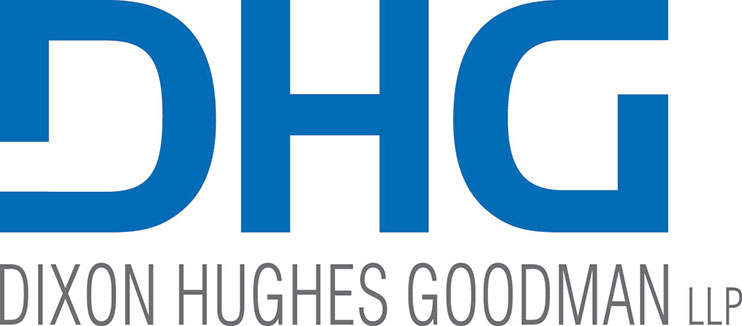
Improving the Budget Process for Your Business
Budgeting may be considered a great equalizer among businesses of all types: at the end of the fiscal year, we all measure and analyze the previous year, as well as plan accurately for the next year with goals aligned to a strategic plan. However, the process leaves many businesses frustrated as they struggle with what may seem to be an overwhelming task, full of complicated processes while working through any identified inefficiencies. For many organizations, it may be beneficial to take a step back and analyze your budget process, which can help you understand where problems occur.
Improving your budget process does not have to be a complete overhaul, but rather some tweaking that can lead to better efficiency and value. In this article, we highlight some tips and considerations that may help you work through improvements to your own budget process, as well as some of the high-level benefits that can result for your organization.
Establish a Budget Charter
A budget charter is simply your organization’s goals for its budgeting process. By establishing a charter, your organization can clearly establish an overarching goal of the budgeting process, guiding the decisions of what will be included in the final process and how the process will create value. An example of a charter is as follows:
CHARTER
Establish a budget process that aligns company business planning and strategy execution with budget process workflow to achieve a conservative realistic budget.
Our final budget process will include:
- Defined calendar with steadfast deadlines
- Timely integration of business planning into the budget process workflow
- Timely integration of prescriptive metric goals
- Defined critical tasks/elimination of inadequate value steps
- Short-term technology enhancements
- Identify and consider company investments
The above processes will create additional value by:
- providing specific accountability of each of our team members
- efficiently utilizing and respecting the time of our team
- communicating a consistent and clear plan to each of the leaders
- focusing on all 5 elements of company strategy
Each time DHG examines our own budgeting processes, our charter serves as the cornerstone for any needed refinement. As we brainstorm, contemplate and hypothetically test our budget process, we continually ask, “Is this in alignment with our charter? Does it help us to create additional value?”
A Team Effort
Budgeting should be a team effort with personnel in operations, finance, human resources and executive leadership. Depending on the size of your organization, i.e. if you have leaders over different regions or office locations, you may also involve regional and local leaders to weigh in on what is important to them in the budget process and align those needs to your charter. Creating a team environment improves accountability of all team members and ensures that all departmental interests in the budget are represented during crucial decision making. One simple way to bring your team together is by creating a communication plan that addresses all pertinent departments, levels, leaders and decision makers in your organization as you prepare to walk through your budget process. You may also allow your team to provide collaborative feedback about how the budget charter affects their departmental goals and interests. Clear and open communication can minimize misunderstandings and potential conflict when making crucial decisions on the budget. Therefore, having the right pulse from all areas of the organization will help your organization remain in alignment with the budget charter and set more realistic budget goals.
Deconstruct Your Current Process
Mapping your current budget process may take considerable time; however, when you review the current process in comparison with your charter, you will be able to identify:
- Critical pain points in the process.
- Inefficiencies (i.e. areas where you are spending considerable time but not gaining value).
- Disconnects between your organization’s business planning and strategy.
Incorporate Your Charter and Annual Business Goals Early in Your Process
As DHG deconstructed our budget process, we were intentional about incorporating our charter early in that process. We knew that key decisions could be made early in the process, and we were able to align the budget to the firm’s annual business goals and underlying strategy. By first addressing the most important aspects of our business, we aligned our leadership on these aspects and reduced the time invested in less critical areas.
Reduce Timeframes
While budgeting is a complex process for many, there are opportunities to streamline the process for efficiencies and create the final budget in a shorter timeframe. Consider creating a streamlined process for your budget that includes a defined calendar with steadfast deadlines, timely integration of business planning into the budget process workflow, and timely integration of prescriptive metric goals you want to achieve. Doing so may help you better identify and define critical tasks and work to eliminate inadequate value steps in the process.
Key Decisions and Process Alignment
At the point you have identified the enhancements to your budgeting process, the following action steps may be taken:
- Summarize key changes to share with your leadership and process owners.
- Discuss impacts of the key changes on the organization.
- Identify key decisions for your leadership team.
- Ask for alignment between leadership team and process owners.
- Communicate with and train your process owners.
Technology Enhancements
If your organization is experiencing significant growth, you may wish to reconsider relying on spreadsheets to complete your budgeting for the next fiscal year. Utilizing certain technological enhancements can provide benefit by means of a process that becomes easier and less time consuming. Cloud-based systems are more quickly becoming a standard for different areas of finance, which can provide more functions beyond a manually manipulated spreadsheet. As a result, you can complete budgets in less time with minimal errors. We discussed in our previous installment of this series the benefits of utilizing enterprise performance management (EPM) platforms to improve overall operations of an organization, especially regarding budgeting. (Click here to read more about EPM in our previous article.)
What are the benefits?
Making tweaks and updates to your budgeting process can do more than make the entire process seem less frustrating or overwhelming. For starters, a better process means more accountability from each part of your team. In addition, a more efficient process in a potentially shorter timeframe better utilizes and respects the time of those involved in the team. A better process in the beginning also means better analysis at the end of the fiscal year, when evaluations can be made about goals and objectives, and teams can make better predictions for the future.
For more information about improving your organization’s budget process, reach out to us at info@dhg.com, and stay tuned for more insights from our Performance & Growth Series.

DHG Contacts
Chief Financial Officer

Chief Performance Officer







